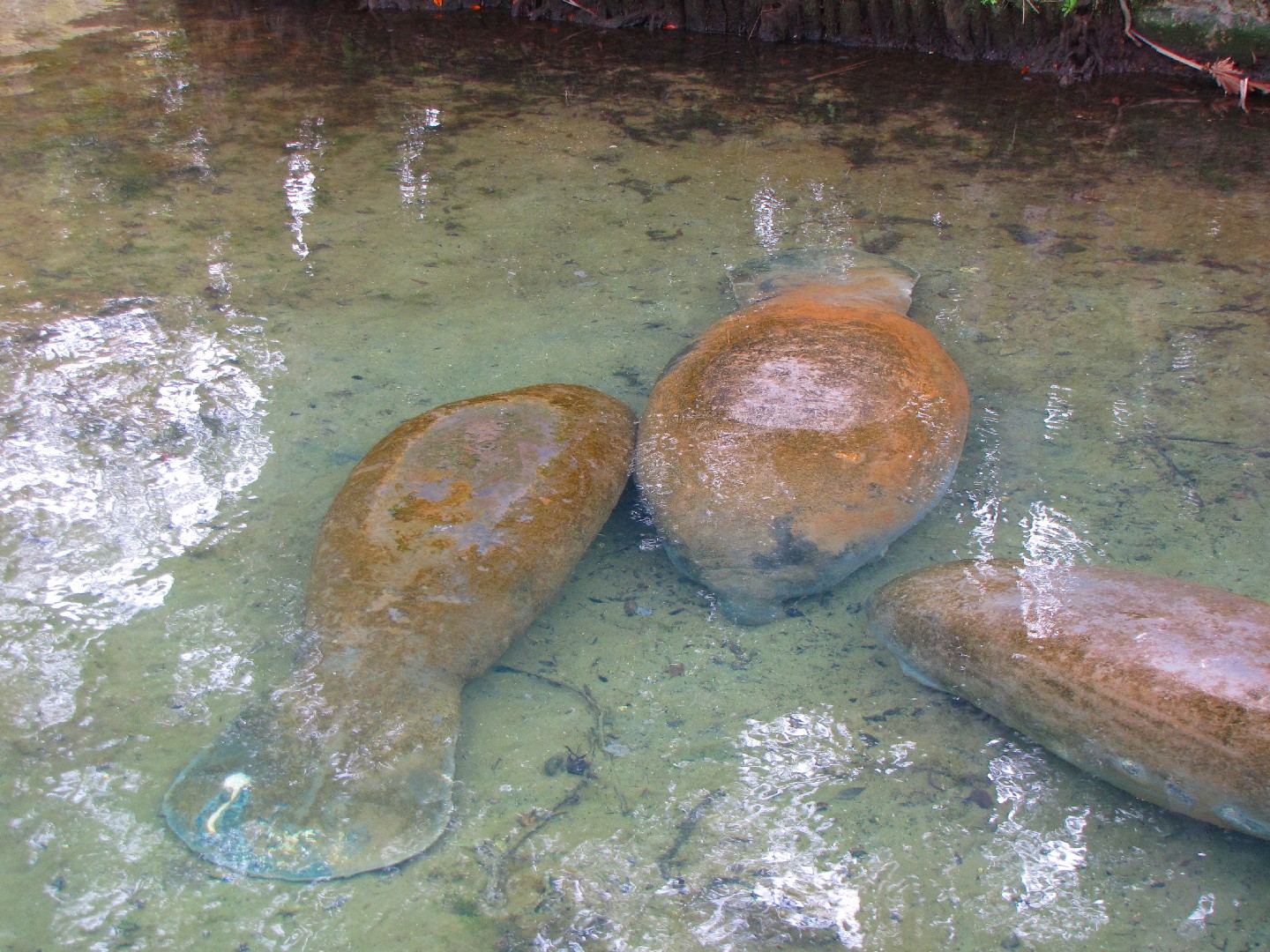Florida manatee
A species of Manatee Scientific name : Trichechus manatus latirostris Genus : Manatee
Florida manatee, A species of Manatee
Scientific name: Trichechus manatus latirostris
Genus: Manatee
Content
Description People often ask General Info
 Photo By Riverbanks Outdoor Store , used under CC-BY-2.0 /Cropped and compressed from original
Photo By Riverbanks Outdoor Store , used under CC-BY-2.0 /Cropped and compressed from original Description
The florida manatee is a large herbivorous aquatic mammal of the Gulf of Mexico and surrounding warm Atlantic waters. Individuals are slow-moving, docile, and live in small families. Famously sensitive to boat collisions, it was saved from the brink of extinction in the 1970s by the Endangered Species Act, but remains vulnerable species.
People often ask
General Info
Lifespan
20-40 years
Diet
Florida manatee is primarily herbivorous, predominantly feeding on aquatic vegetation. This creature exhibits a particular preference for seagrasses, supplemented by water hyacinths, mangrove leaves, and various algae species onsite in its environment.
Appearance
Florida manatee is a large, aquatic mammal noted for its seal-like body shape, with thick, grey-brown, wrinkled skin. It is distinguished by its paddle-shaped tail and long, whiskered, downward-facing snout. The animal also has two flipper-like forelimbs featuring flat nails. There are no significant physical variations due to age, gender, or subspecies within this species.
Behavior
Florida manatee are known for slow, graceful swimming habits, usually spotted alone or in pairs. This species forages for food primarily on sea grass beds. It communicates using a series of squeaks and chirps, demonstrating a basic social structure. Florida manatee lacks territorial behavior, often seen mingling with other marine life.